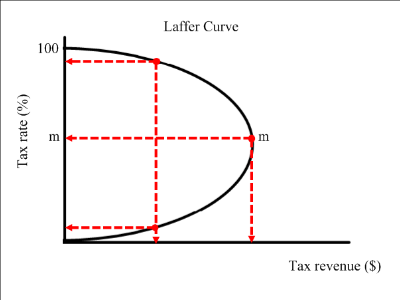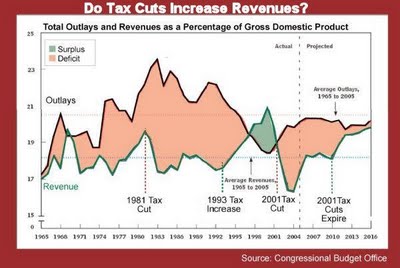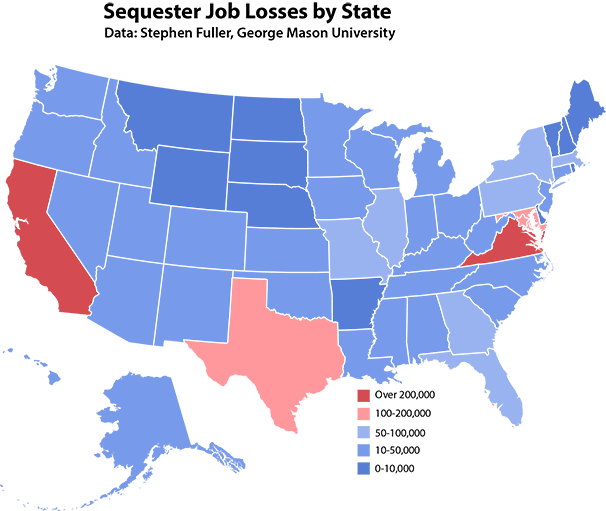by Clayton Flesher
As part of her last two State of the State Addresses, Governor Mary Fallin has proposed a cut to the state income tax, and currently there are two competing tax cut bills in negotiation in the Oklahoma Legislature. After failing to get through the legislature last session, there is an expected announcement due any day on a “grand bargain” to enact the cut.
Fallin has justified her proposal by appeals to our competitiveness with Kansas and Texas.
In her 2013 Address the governor said:
“I’m asking again for you to work with me to reduce the tax burden on working Oklahomans. Lower taxes mean stronger economic growth and more job creation.Let’s let individuals and families keep more money in their pockets to spend on the things they need.
I am asking you to lower the top income tax bracket – which kicks in after the first $8,700 of income made by every Oklahoman — from 5.25 percent to 5.0 percent.
This proposal gives us the flexibility we need to ensure that we are reducing taxes responsibly, without starving government. This is not the last tax cut we will see from my administration. I am serious about lowering taxes, and I will work to get us a lower income tax rate that makes us more competitive with our neighbors to the north and to the south – both of which have lower taxes than Oklahoma.
Reasonably and cautiously reducing taxes, fixing barriers to job growth and innovation, and improving our schools will lay the groundwork for sustained prosperity in Oklahoma. Laying the foundation for job growth and a stronger economy is a big part of how I define success for my administration and for this Legislature.”
Texas hasn’t had a state income tax for over 100 years, and its overall tax burden is pretty low. Kansas and Nebraska have both recently lowered their income tax rates, and Kansas is already feeling the pinch.
The underlying assumption, or at least public justification, that goes into these policies is that lowering the state’s tax burden will attract business. Is this true?
Opponents to the bills point out a number of problems with this assumption. First, it creates perverse race to the bottom in incentives. That is already playing out with Fallin effectively arguing that Oklahoma needs to keep up with the Joneses. We can’t afford to be left behind, but where is the floor on these cuts? When there is a limited number of businesses looking to relocate, particularly large manufacturing industries, everyone bends over backwards to get companies to come.
Ironically, This American Life had an episode in 2011 featuring Oklahoma as one of the most recession-proof business-friendly states in the nation, ostensibly because it was ahead of the game on taxes and regulation.
This American Life correspondent and Planet Money host Adam Davidson summed up the dilemma that states face.
“This is what drove me crazy about this conference, actually about the whole profession of economic development. They’re not creating jobs. They’re just moving jobs around. Arizona steals a company from California by offering some tax break and lighter regulation. Then Texas cuts taxes a bit more, does away with even more regulation, and gets the company to move there. That doesn’t help anything. We still have the same number of jobs. But now we have this race to the bottom. Who can cut back government services the most? Who can eliminate the most regulation?”
None of this implicates Governor Fallin. She’s just doing what every other governor does; trying to make the state as economically viable as possible without completely destroying the ability of the state to function financially.
But Oklahoma doesn’t need to keep up with the Joneses. As the This American Life piece points out, Oklahoma is the Joneses everyone else is trying to be.
There is another, much larger problem with the premise of this line of reasoning. It isn’t at all clear that cutting the state’s income tax will actually lead to significant economic growth.
Back in the early 2000s, President Bush proposed cutting the federal income tax based on the idea that cutting rates would stimulate economic growth and lead to a net plus in revenue. The basis for this line of reasoning is known as the “Laffer Curve,†(also famously called “voodoo economics” by the first President Bush) named after University of Chicago economist Arthur Laffer.
The idea behind the Laffer Curve is that if tax rates get too high, governments will actually get less tax revenue by sufficiently suppressing economic growth. By keeping rates relatively low, and economic output relatively high, actual revenue can be optimized. This, along with government consolidation, is the basis for Mary Fallin’s claim to the Tulsa Chamber of Commerce that Oklahoma can afford to cut rates while increasing spending on things like education.
There are all kinds of problems with this line of argument. As Nobel Prize Winning Economist Paul Krugman has pointed out, the United States is not near peaking on the Laffer Curve. He argues that it would take rates as high as 70% on highest earners to get the effects argued for by Arthur Laffer. Krugman’s argument is consistent with the academic research. It is also supported by a 2005 study by the Congressional Budget Office of the predicted impact of a 10% tax cut, which found that it would not even break even over the next decade.
Laffer’s arguments on state policy don’t stand up under scrutiny any better than they do for federal. The empirical claims made in Laffer’s annual policy recommendations are quite problematic.
For example, Laffer has a bad habit of comparing apples with oranges. In his first of five policy proposals, Laffer argues for eliminating all personal state income taxes by comparing states with no personal income tax with the states with the highest marginal rates. That’s a fine comparison, if you are trying to show that no income tax is better or worse than the states with the highest marginal rates. It is entirely useless if you are trying to find the optimal policies for a state like Oklahoma, which has an income tax but relatively low marginal rates. Conveniently, Laffer forgets to compare states like Oklahoma with states like Texas. Possibly because it would undermine his thesis that states with no personal income taxes are optimal.
The overwhelming consensus among economists is that the laffer curve is deeply flawed. This does nothing to persuade Laffer and the conservative movement generally. His views may be out of fashion in Washington and in the halls of academia, but that hasn’t stopped him from shopping them around to states with conservative governors and legislatures; like Oklahoma, Kansas and Nebraska.
The Oklahoma Council of Public Affairs, a conservative think tank, is the loudest advocate beating the drum for an income tax cut in Oklahoma. They’ve published multiple articles citing the American Legislative Exchange Council (ALEC), a national think tank that has Arthur Laffer on its board.
Since 2007, ALEC has been putting out annual “Rich States, Poor States” studies where it makes recommendations based on self-styled free market approaches to economics. In these studies, ALEC has advocated that states try to promote economic growth by eliminating income and corporate taxes while implementing anti-union right-to-work laws.
There is zero doubt that Mary Fallin is buying Laffer’s arguments. She wrote the foreword for the most recent edition of Rich States, Poor States. After outlining the fact that Oklahoma has grown economically while most of the rest of the nation was suffering in 2008, she says:
“All of these successes are the results of the kind of common sense, conservative policies outlined by Dr. Art Laffer, Stephen Moore, and Jonathan Williams in Rich States, Poor States. I have been committed to these fundamental principles for years, and we are seeing incredible results because our legislators have had the courage to stand with me in support of conservative governance. Oklahoma’s economy is outperforming the national economy, and our success stands in stark contrast to the record of dysfunction, failed policies, and outrageous spending that occurs in Washington, D.C.
Oklahoma could teach Washington a lesson or two about fiscal policy and the proper size and role of government—and so could the tax and fiscal policy reforms espoused by ALEC.”
It isn’t at all clear that Oklahoma’s economic successes during the recession had anything to do with Laffer’s ideas. More likely, Oklahoma performed well largely because it’s economy is based on energy, military and agriculture, sectors that were not greatly affected by the recession. Oklahoma never had a housing bubble in the first place, and we have almost no financial sector to speak of.
We were lucky. If the bust had been in the energy sector, aviation, or if the bottom had dropped out of the cattle and wheat markets, Oklahoma would have been devastated.
We are seeing a bit of that play out right now with the military sector. Oklahoma receives more in federal expenditures than residents of our state pay in federal taxes, in large part because of the state’s numerous military bases. The sequester when fully implemented will hit the state economy severely.
In November 2012, the think tank Good Jobs First and the Iowa Policy Project published a devastating critique of Laffer and Rich States, Poor States titled Selling Snake Oil to the States. In it, economists Peter Fisher, Greg LeRoy and Philip Mattera argued that on nearly every major economic prediction, Laffer and ALEC were not supported by the evidence. They claim that if you follow ALEC’s policy suggestions, you’d actually have had a worse economic outcome.
From their press release:
“We tested ALEC’s claims against actual economic results,†said Dr. Peter Fisher, primary author of the study. “We conclude that eliminating progressive taxes, suppressing wages, and cutting public services are actually a recipe for economic inequality, declining incomes, and undermining public infrastructure and education that really matter for long-term economic growth.â€
That sounds pretty familiar. Oklahoma has not had an increase in wages or personal income over the last few years, though we have had an increase in household income. Public services have been on the chopping block, education funding has not kept up with inflation, and even Mary Fallin is calling for the legislature to pay to fix our crumbling infrastructure.
Fisher, et al., show that, among other things, that the higher a state was ranked by ALEC, the worse those states actually have done in the interim on growth.
From the report:
Most tellingly, since the ALEC-Laffer report is about policies to enhance state prosperity, the 2007 Economic Outlook Ranking is actually a decent predictor of how state per capita income will change from 2007 to 2011—but in the opposite direction from what the report claims.
The more “competitive†a state was according to ALEC, the less its per capita income grew (see Figure 3). The negative correlation of -.27 is statistically significant.
The only indicator where Laffer’s predictions turn out to be correct are regarding population growth. States that ranked higher on the index had more population growth. Since these same states had less economic growth, that might actually be a problem.
Also from the report:
“Instead of focusing only on the top and bottom six or nine or ten states, where the cutoffs are selective and arbitrary, we consider all 50 states and compute a correlation coefficient. Still, while we demonstrate a negative relationship between ALEC’s recommendations and a stronger economy, we do not pretend that such correlations establish causality. But Laffer argues that the relationship is so strong between the policies of Rich States, Poor States and beneficial outcomes that it will show up repeatedly in simple correlations. Clearly the evidence, when examined using a more objective and reliable approach, does not support this conclusion.”
The paper then goes on to argue that not only does Laffer’s own data not support his conclusions, but neither does the consensus of academic research. They allege that throughout his papers, Laffer is cherry-picking from either poor studies, or outright misrepresenting what good studies conclude.
Such accusations couldn’t go unchallenged, and early this year ALEC fired back with a 48-page paper titled Tax Myths Debunked, where they argue that the Good Jobs First criticisms are without merit.
ALEC frames their response within the false-dichotomy of free marketers vs. government interventionists, but all that does is show their own ideological hand. It is simply not the case that most economists today are on either ideological extreme. Laffer and the ALEC folks actually are on one ideological extreme, so anyone who is to the left of them is depicted as advocating for massive government intervention into markets. There are, of course, living economists that take such a stance, but most economists are what you would call neo-classical. This is explicitly the approach taken by Fisher et al. To call them opponents of markets is silly, false and beside the point.
After wasting most of the report making arguments against things that Fisher and their critics didn’t actually say, ALEC finally addresses Fisher’s criticisms directly, claiming Fisher used bad methodology. Fisher explains here why it isn’t.
ALEC then goes on to claim that it is accepted among economists that tax policy is strongly correlated with economy, citing two studies. ALEC completely ignores the dozens of studies already cited by Fisher, et al, showing that there isn’t. It just pretends they were never cited.
Anybody can find a couple of studies arguing for just about anything. I can find two studies in peer reviewed literature showing that there is evidence for the existence of psychic abilities in dogs. That doesn’t mean that it is a mainstream position in psychology, or that there aren’t more and better studies that show there isn’t.
Finally, ALEC didn’t like Fisher’s method for comparing rankings with growth. It was a technical point, and ALEC suggested a solution. In his later response, Fisher actually followed their suggestion, and it makes their rankings look even worse.
Fisher concludes:
“In sum, nothing in Tax Myths actually undercuts any of the analyses or conclusions in Selling Snake Oil. In fact the authors’ misinterpretation of our use of economic structure variables and misuse of the state coincident indices serve only to further confirm the shoddiness of the research sponsored by ALEC.”
Mary Fallin has hitched her wagon to Laffer and his infamous curve. Several Oklahoma economists, including the chair of the Economics Department at the University of Oklahoma, Oklahoma State University Regents Professor Emeritus, and the dean of the business college at the University of Central Oklahoma, all oppose eliminating the state income tax. They, along with think tanks like the Oklahoma Policy Institute, have been doing their best to get the word out about how poorly supported these ideas are. Only time will tell if they will be successful at derailing long-term deep cuts.



A better image for the laffer curve is here: http://gapersblock.com/mechanics/663px-Neo-Laffer-Curve.svg.png